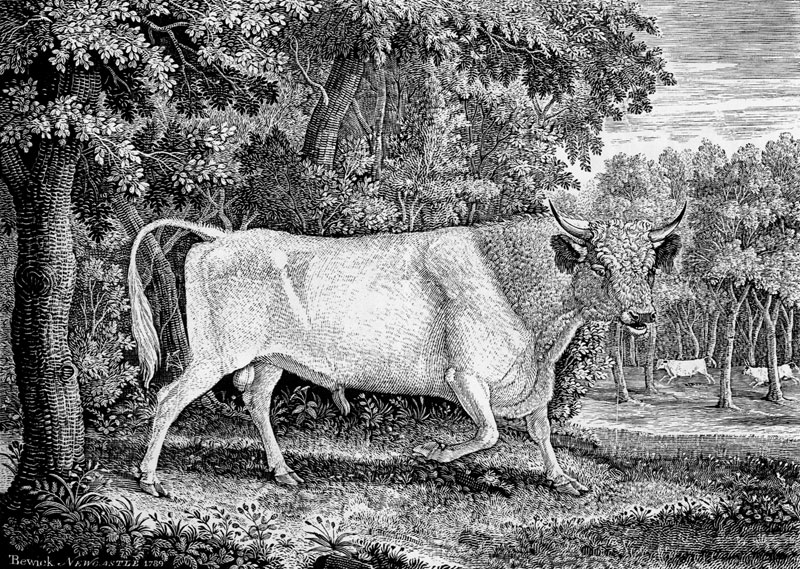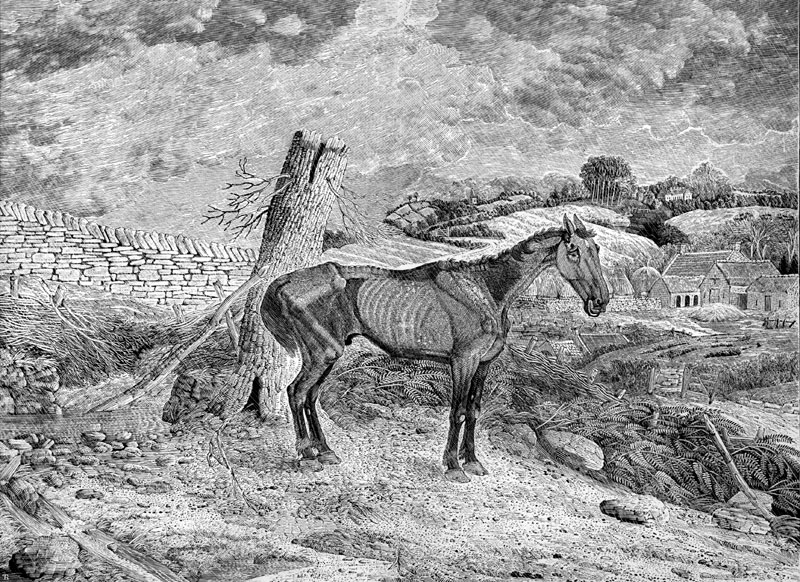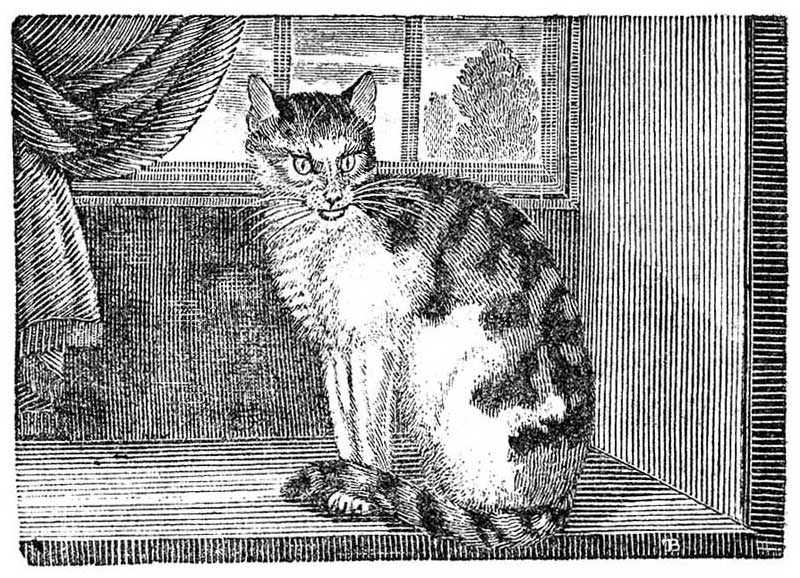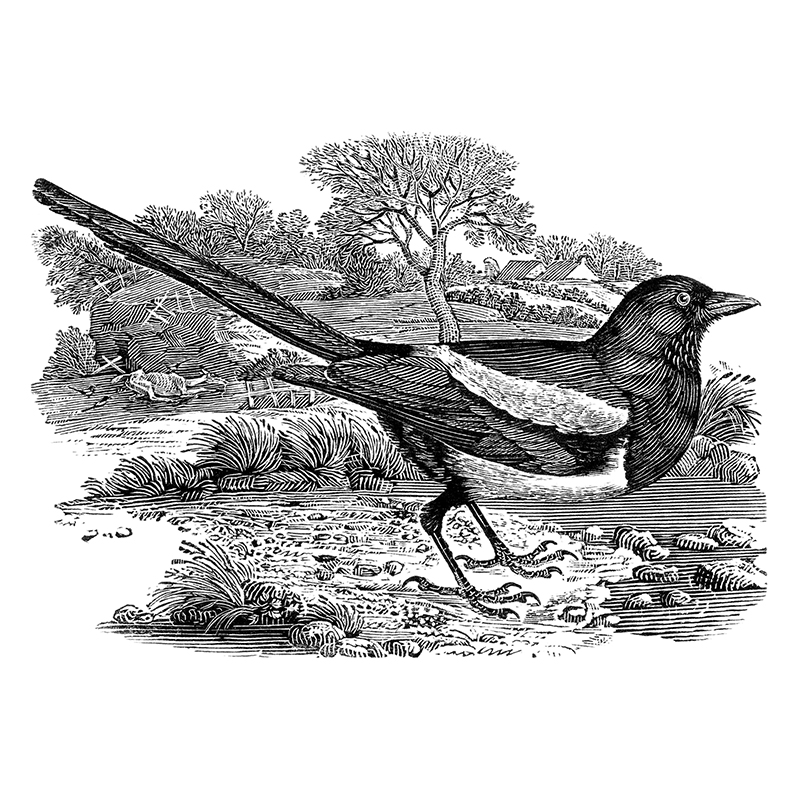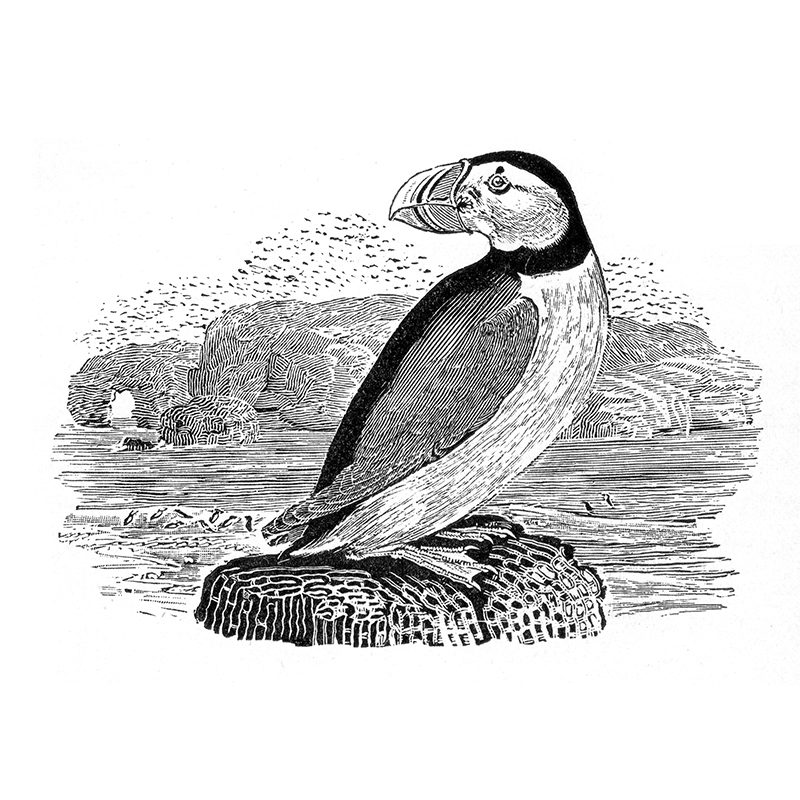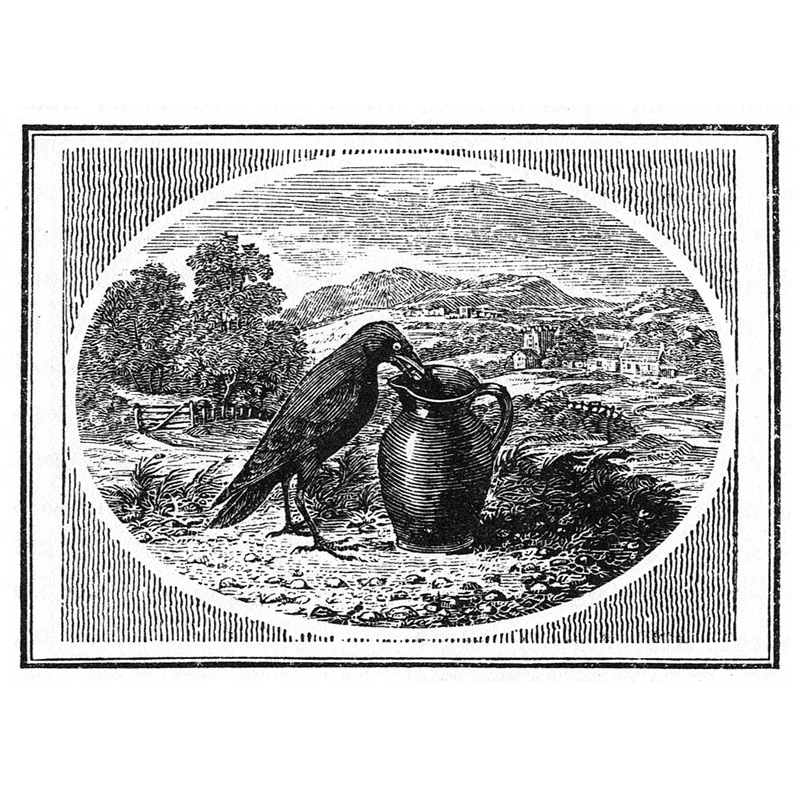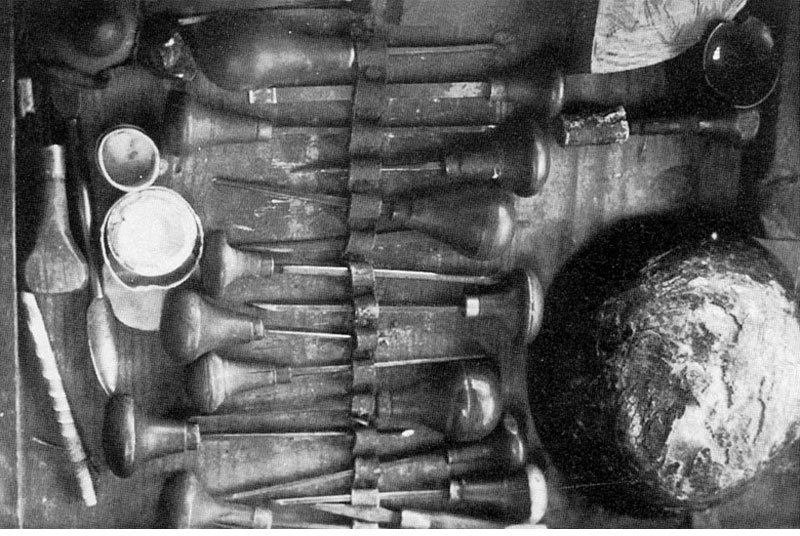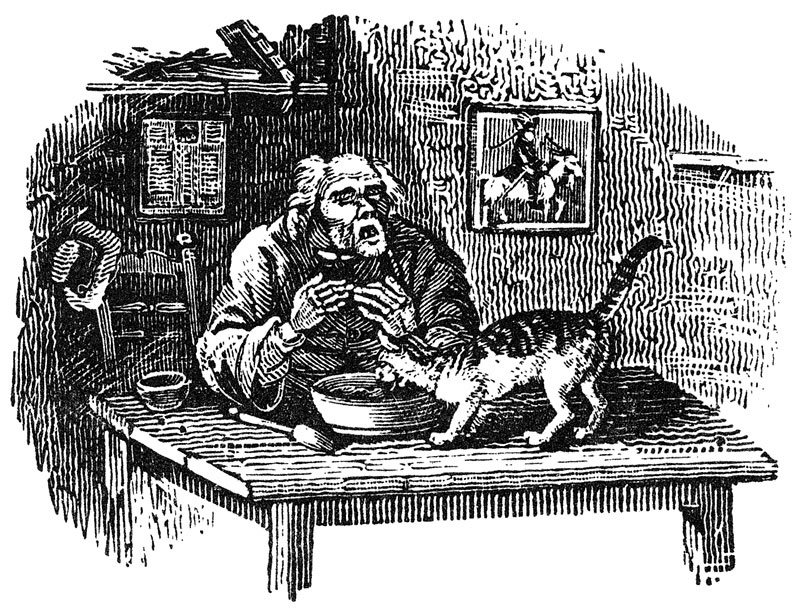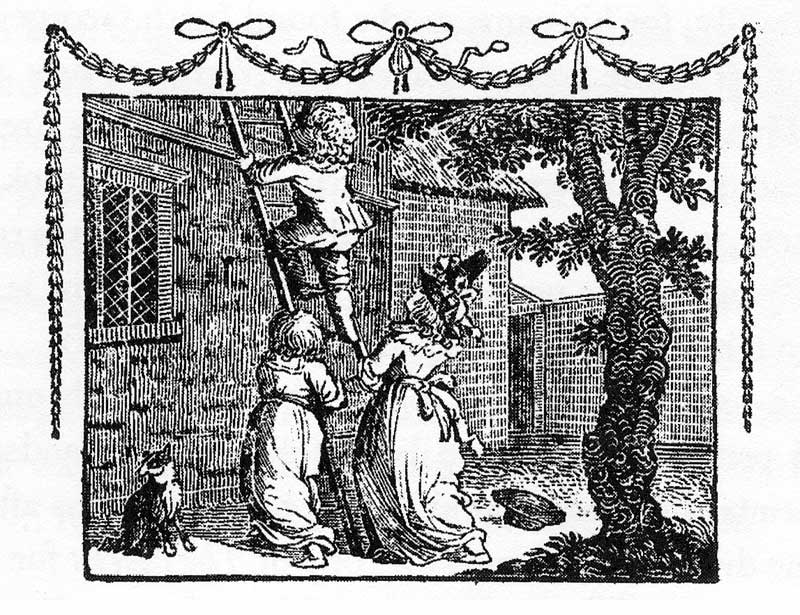Gallery
Major Publications
This page shows examples of the figures from the major printed works that made Bewick's reputation. The two large prints from the beginning and end of his career are shown, The Chillingham Bull and Waiting for Death, and a selection of figures from A History of Quadrupeds, A History of British Birds (Volume 1 on Land Birds, Volume 2 on Water Birds), and The Fables of Aesop are included here. Most of the figures are by Thomas Bewick’s own hand, observation and imagination. Except for Aesop, these were mainly executed in the evenings after a day’s work in the shop.
